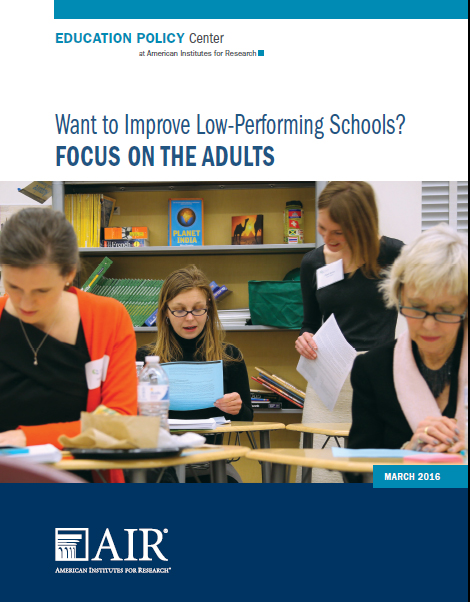Want to Improve Low-Performing Schools? Focus on the Adults
 School improvement policy for the past few decades has been characterized by mandated lists of activities—both well intended and research based—designed to stimulate a dramatic turnaround in student achievement. However, this prescriptive approach to policy, particularly federal policy, has not resulted in the systemic changes needed to get the right teachers and leaders into low-performing schools to support school improvement. In the long run, this policy approach did not engender the school-level changes necessary to create learning organizations that support teachers and leaders.
School improvement policy for the past few decades has been characterized by mandated lists of activities—both well intended and research based—designed to stimulate a dramatic turnaround in student achievement. However, this prescriptive approach to policy, particularly federal policy, has not resulted in the systemic changes needed to get the right teachers and leaders into low-performing schools to support school improvement. In the long run, this policy approach did not engender the school-level changes necessary to create learning organizations that support teachers and leaders.
The Research
One key lesson from the past decades of school improvement research is that an explicit focus on improving the capacity and stability of teachers and leaders in low-performing schools would benefit these schools more than another mandated checklist of improvement activities. Schools can never be any stronger or more effective than the adults who work in them—doubly true for chronically low-performing schools.
Recommendations
With the passage of the Every Student Succeeds Act (ESSA), state policymakers must prepare for states’ increased role in making low-performing schools better. We suggest policymakers step back from requirements to implement specific improvement activities (similar to those required by the federal School Improvement Grants [SIG] program) and instead focus policy on the development and support of human capital. New policies must aim to get the right people in our schools and to create district and state systems that retain those people and build their knowledge and skills to turn schools around.
